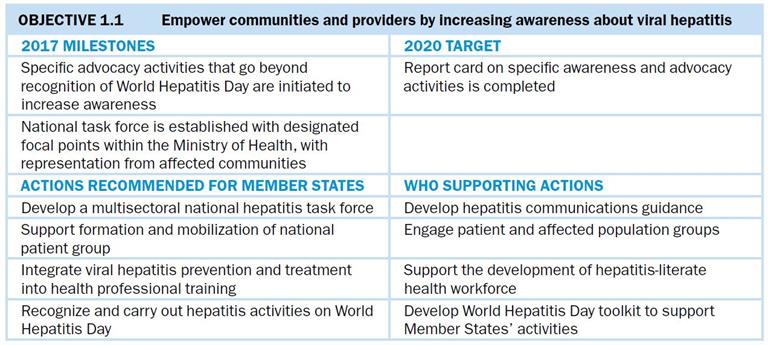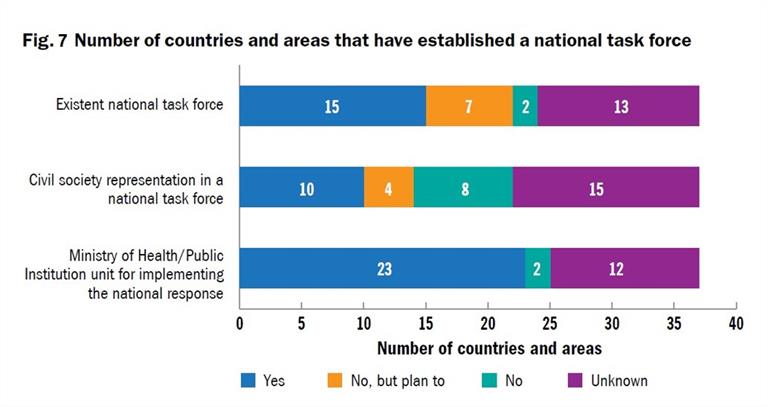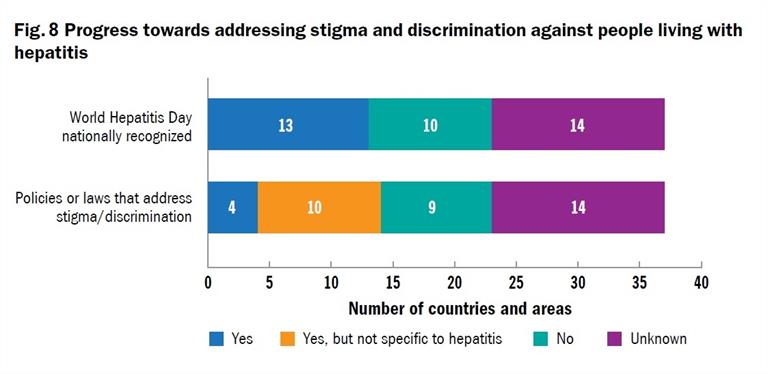Priority Area 1: Broad-based advocacy and awareness

Advocacy and awareness
15 countries and areas have developed national task forces for viral hepatitis with designated focal points in the Ministry of Health (Fig 7). The majority of these task forces included patient groups and civil society organizations that were invited to participate in policy and guideline development.

World Hepatitis Day
Thirteen countries and areas report carrying out activities on World Hepatitis Day with combined input from government and civil societies (Fig. 8). These activities included: public announcements, awareness and media coverage, as well as increased testing and education. In the Pacific islands, health ministers from 20 islands convened on World Hepatitis Day for the Twelfth Pacific Health Ministers Meeting. One of the aims of this Meeting was to discuss policy development related to viral hepatitis.

To celebrate Mongolia’s efforts in addressing viral hepatitis, the Western Pacific Region hosted the global commemoration of World Hepatitis Day 2018 in Mongolia. The global theme “Test.Treat.Hepatitis” was used to call for political commitment on elimination of viral hepatitis around the world. Advocacy and communication activities aimed to support the scaling-up of hepatitis prevention, testing, treatment and care services, mobilize wider partnerships and funding, and promote universal health coverage by showcasing best practices and national action. The Government of Mongolia, together with WHO, took the opportunity as the host country to focus on raising publicity and awareness, with a focus on young people. During World Hepatitis Day, over 1 500 people received free hepatitis testing, and people living with hepatitis were invited to share their experiences. The Minister of Health of Mongolia reiterated a national commitment towards viral hepatitis elimination as a public health threat.

Free hepatitis testing during World Hepatitis Day 2018, Ulaanbaatar, Mongolia
Stigma and discrimination
Stigma and discrimination potentially constitute a major barrier to accessing testing and treatment services and are not well understood in the Region. Only four countries had policies specifically addressing stigma and discrimination towards people living with hepatitis (Fig. 8). A systematic review of HBV stigma showed more research was needed as there was a lack of data in this area and limited recognition of this as a potentially major barrier in offering hepatitis services. Studies on people living with hepatitis in countries such as China and Viet Nam showed varying levels of stigma and discrimination, both perceived and experienced. A study was carried out in China to pilot a “discrimination index” to measure the experience of HBV discrimination adapted from the stigma index instrument developed by UNAIDS for assessing discrimination experienced by HIV/AIDS patients. This showed that 75% of respondents perceived or experienced discrimination by family, friends, colleagues, leaders or health-care workers because of their HBV infection. Less than 10% were aware of organizations or institutions that provide help to mitigate discrimination. Clearly more research is required to understand the experience of those living with hepatitis, and to evaluate interventions that could help mitigate the impact of stigma at individual, community and programme levels.




